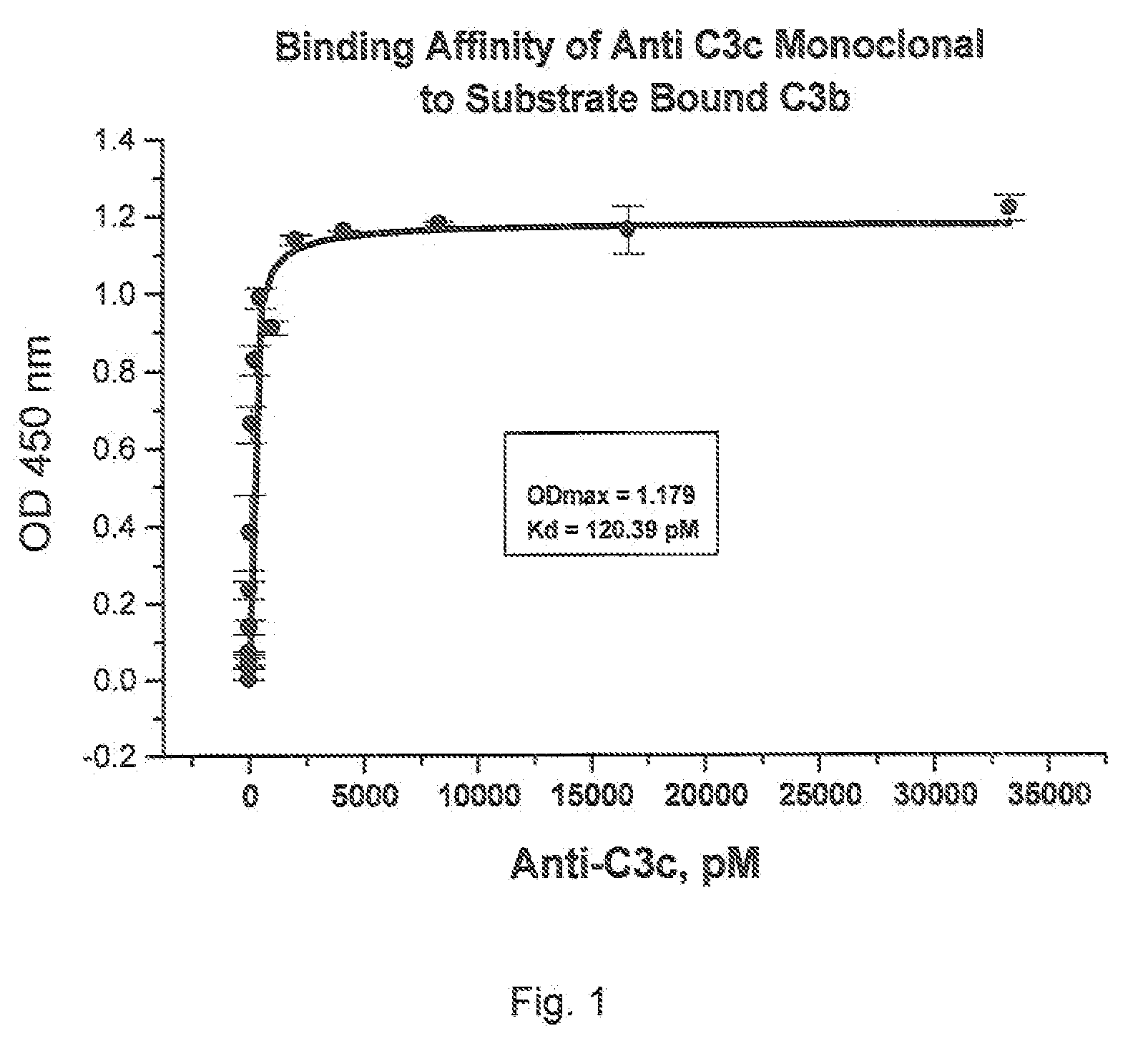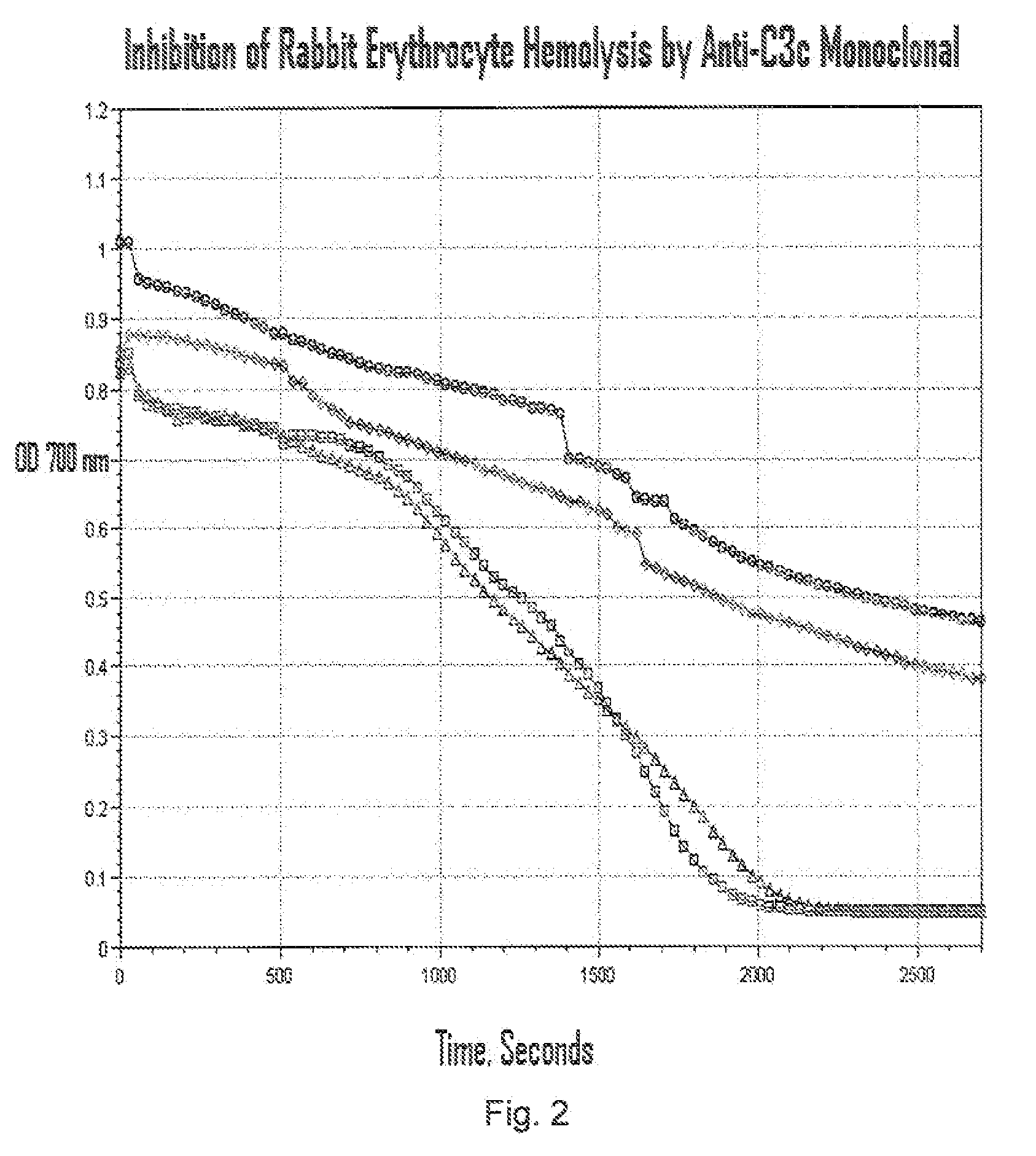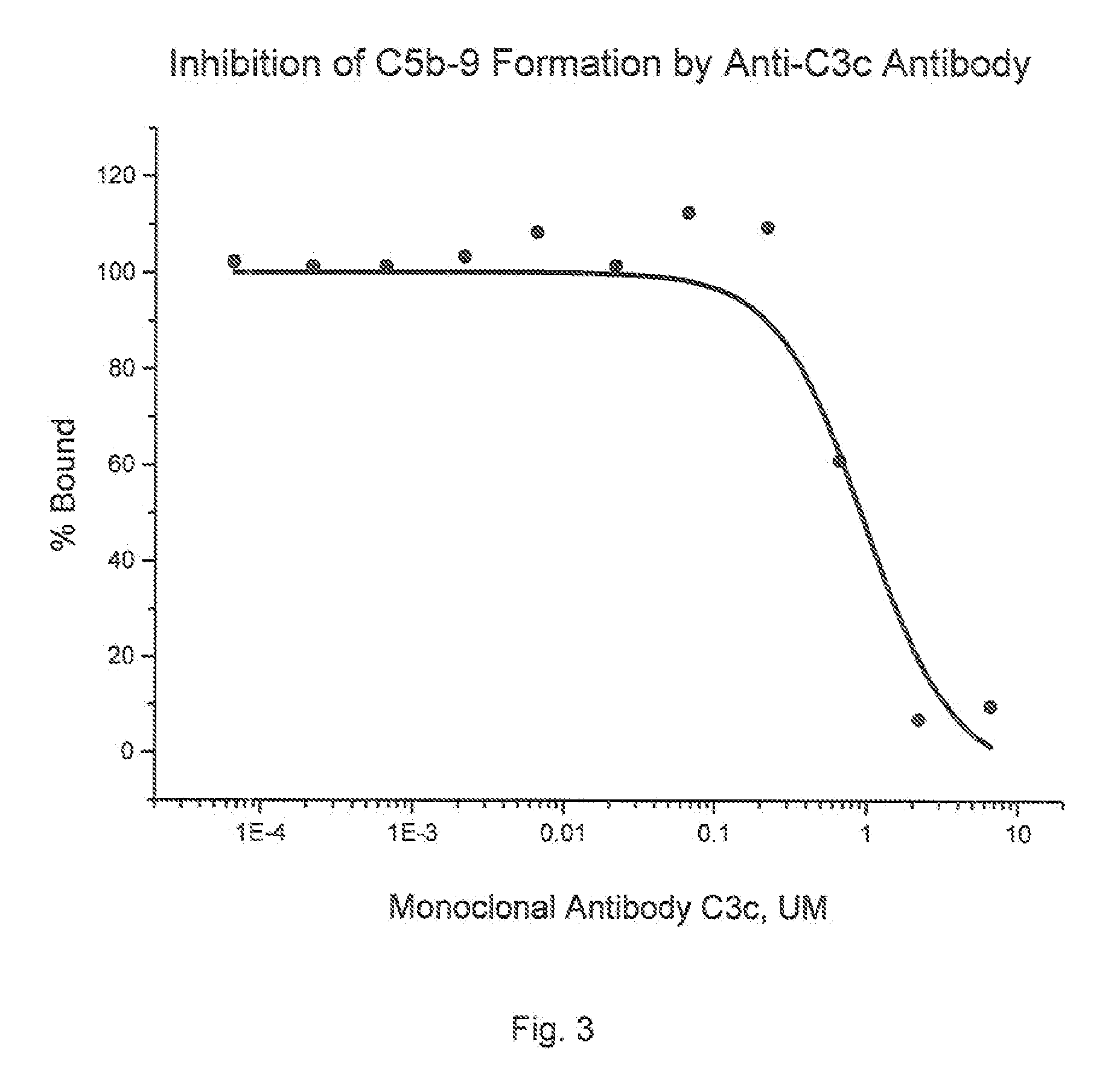Method of inhibiting complement activation with human Anti-factor c3 antibodies and use thereof
a technology of complement activation and anti-factor c3, which is applied in the field of inhibiting complement activation with human anti-factor c3 antibodies, can solve the problems of presenting a potential threat to the host, lytic complement components, and complete absence of human approval drugs, and achieves the effect of reducing the side effects of chemotherapeutic drugs
- Summary
- Abstract
- Description
- Claims
- Application Information
AI Technical Summary
Benefits of technology
Problems solved by technology
Method used
Image
Examples
example 1
Production of Polyclonal Antibodies
[0166]This example describes a method of producing polyclonal antibodies against C3b. Polyclonal anti-human C3b antiserum is produced by immunizing rabbits with the C3b Six-week old Rabbits, primed with BCG (bacillus Calmette-Guerin vaccine) are immunized by injecting 100 μg of C3b at 100 μg / ml in sterile saline solution. Injections are done every 4 weeks, with antibody titer monitored by ELISA assay. Culture supernatants are collected for antibody purification by protein A affinity chromatography.
example 2
Production of Murine Monoclonal Antibodies
[0167]This example describes a method for producing murine monoclonal antibodies against rat or human C3b protein and / or polypeptides. Male A / J mice (Harlan, Houston, Tex.), 8-12 weeks old, are injected subcutaneously with 100 μg human or rat rC3b or rC3bA polypeptides in complete Freund's adjuvant (Difco Laboratories, Detroit, Mich.) in 200 μl of phosphate buffered saline (PBS) pH 7.4. At two-week intervals, the mice are twice injected subcutaneously with 50 μg of human or rat rC3b or rC3bA polypeptide in incomplete Freund's adjuvant. On the fourth week the mice are injected with 50 μg of human of rat rC3b or rC3bA polypeptide in PBS and are fused 4 days later. For each fusion, single cell suspensions are prepared from the spleen of an immunized mouse and used for fusion with Sp2 / 0 myeloma cells. 5×108 of the Sp2 / 0 and 5×108 spleen cells are fused in a medium containing 50% polyethylene glycol (M.W. 1450) (Kodak, Rochester, N.Y.) and 5% dim...
example 3
Selection of Anti-C3b Monoclonal Antibodies
[0168]Culture supernatants from hybridoma cultures that test positive in the C3b binding ELISA assay described above can be tested in a binding assay to determine the binding affinity the C3b inhibitory agents may have for C3b. Polystyrene microtiter plate wells (96-well medium binding plates, Corning Costar, Cambridge, Mass.) are coated with C3b (20 ng / 100 μl / well, Advanced Research Technology, San Diego, Calif.) in phosphate-buffered saline (PBS) pH 7.4 overnight at 4° C. After aspirating the C3b solution, wells are blocked with PBS containing 1% bovine serum albumin (BSA; Sigma Chemical) for 2 h at room temperature. Wells without C3b coating serve as the background controls. Allquots of hybridoma supernatants or purified anti-C3b MoAbs, at varying concentrations in blocking solution, are added to the wells. Following a 1 h incubation at room temperature, the wells are extensively rinsed with PBS. C3b-bound anti-C3b MoAb is detected by th...
PUM
| Property | Measurement | Unit |
|---|---|---|
| Chemotherapeutic properties | aaaaa | aaaaa |
| Inhibition | aaaaa | aaaaa |
Abstract
Description
Claims
Application Information
 Login to View More
Login to View More - R&D
- Intellectual Property
- Life Sciences
- Materials
- Tech Scout
- Unparalleled Data Quality
- Higher Quality Content
- 60% Fewer Hallucinations
Browse by: Latest US Patents, China's latest patents, Technical Efficacy Thesaurus, Application Domain, Technology Topic, Popular Technical Reports.
© 2025 PatSnap. All rights reserved.Legal|Privacy policy|Modern Slavery Act Transparency Statement|Sitemap|About US| Contact US: help@patsnap.com



